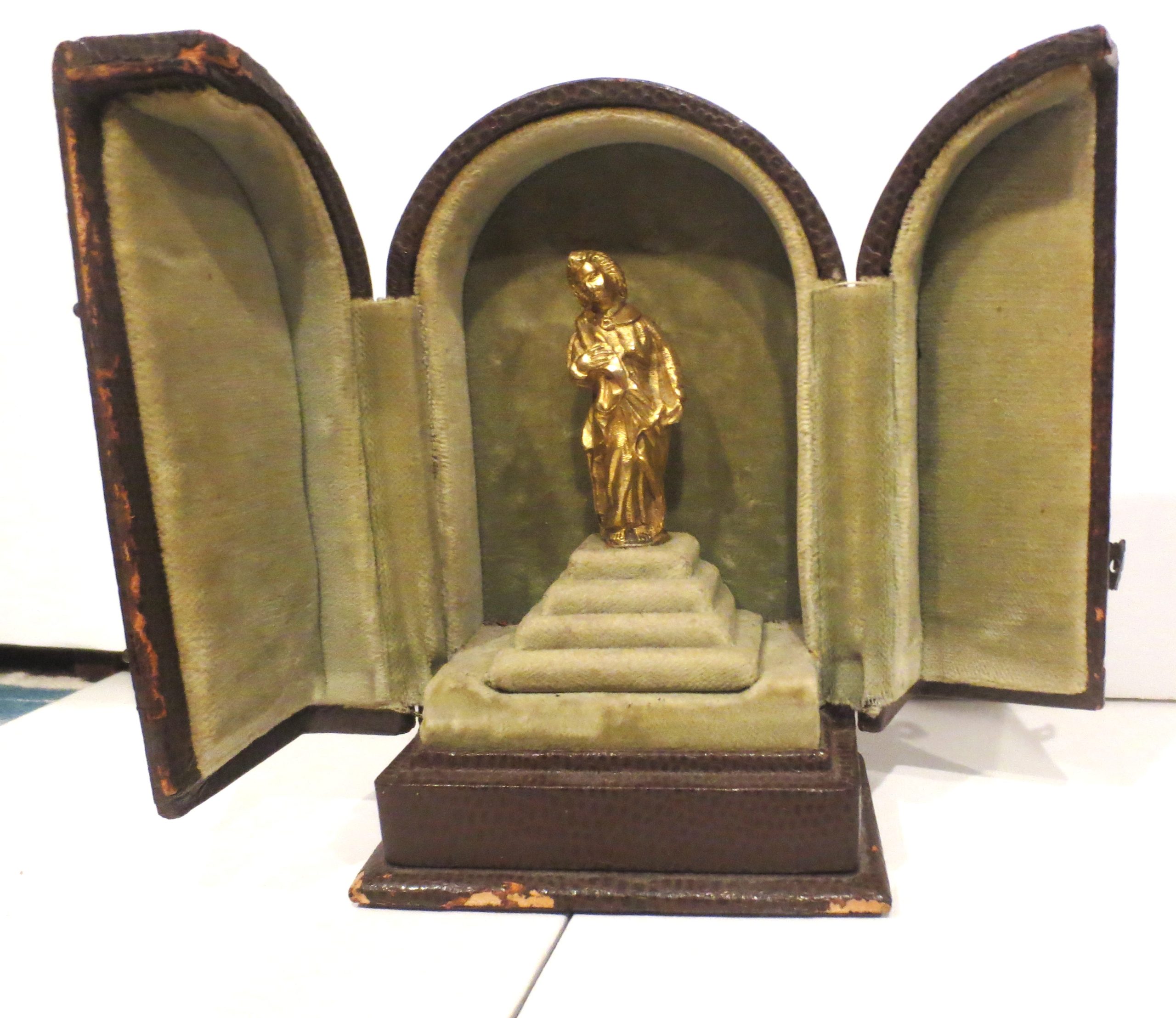From the Ottonian regimes on, such small, elegant bronze, silver or gilded statuettes served both ecclesiastic and secular functions as ornamental handles for seals and figuration on table fountains. During the apogee of the High Gothic in Germany and the Netherlands, on many private scale crucifixes small ancillary figures of Mary and St. John the Evangelist were set on extended lateral projections from the cross beneath the figure of Christ to complete the Golgotha triad.
This statuette was apparently displayed as an objet de vertu in the nineteenth century detached from its original context. It was probably created in Southern Germany in the late fifteenth century as indicated by the older elegance of St. John’s serpentine posture. As such, its style was heir to the earlier Schöne Stil that was often maintained in these elegant miniatures well after larger sculpture had evolved sterner realism of the wood, marble and bronze sculpture during the Renaissance in Northern Europe. Comparable examples of these precious statuettes from late fifteenth century southern Germany (Nürnberg, Augsburg and perhaps Munich), are readily availed with excellent scholarly apparatus in:
William D. Wixom, Renaissance Bronzes from Ohio Collections, Cleveland (Museum of Art), 1975, no. 12 and inter alia passim.
Dietmar Lüdke, Die Statuetten der gotischen Goldschmiede, 2 vols., Munich, 1983, vol. II, Katalog 323, Paris; Katalog 346 London V&A; illustrated in vol. I, fig.197 (London) and fig.198 (Paris).




